 |
|
HOME
|
US Navy -
ships
|
US Navy - air
units
|
USMC - air
units
|
International
Navies
|
Weapon Systems
|
Special Reports |
|
Aircraft / Surface Vessel Weapon System Martlet Lightweight Multirole Missile (LMM) |
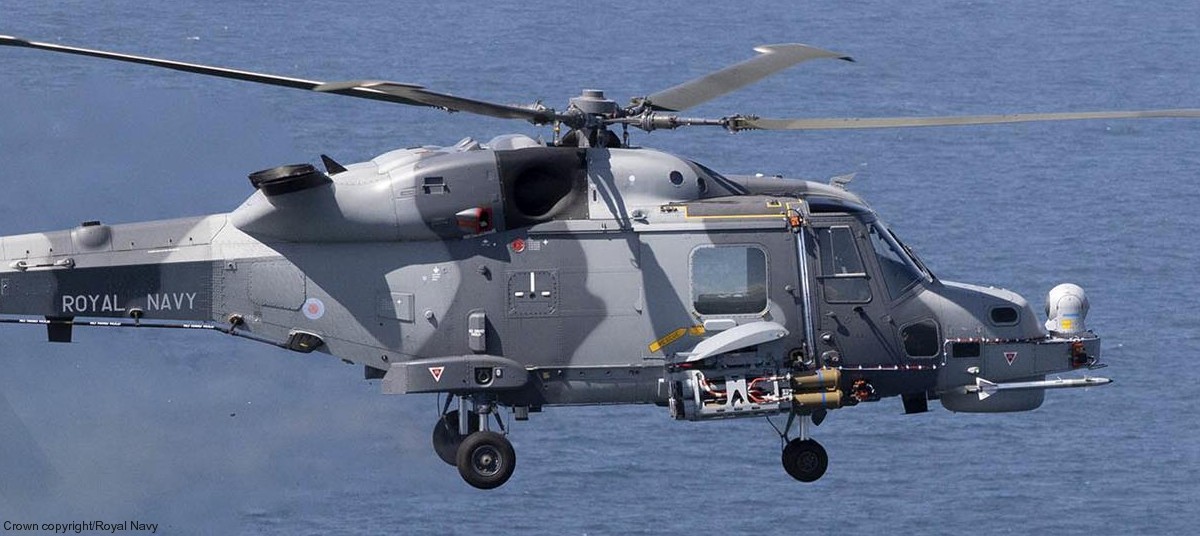 |
| 10/20 |
|
Martlet, formerly Lightweight Multirole
Missile (LMM) and previously known as Future Air-to-Surface Guided
Weapon (Light) FASGW(L), is a lightweight air-to-surface and
surface-to-surface missile developed by Thales Air Defence for the
United Kingdom. The Ministry of Defence (MOD) placed an initial
order for 1,000 missiles and deliveries due to start in 2013.
However, initial operating capability has been considerably delayed
and is now expected in 2021 with full operating capability
anticipated in 2024. The missile was given the name "Martlet" in
British service. History: The Lightweight Multirole Missile was initially conceived as Thales' response to the MoD's Future Air-to-Surface Guided Weapon (Light) FASGW(L) requirement. It was designed to be launched from a variety of naval, air and land platforms against a wide range of targets. High precision reduces collateral damage and makes the missile suitable for asymmetric littoral operations. Development began in 2008 and the LMM uses technology from an earlier Thales missile, the Starstreak. Qualification testing and initial production commenced in late 2011, following an initial contract by the UK Ministry of Defence in April 2011. Thales has conducted successful guidance control firings, including a semi-active laser (SAL) version. The MoD contract includes the design, development and qualification of a laser beam rider version of LMM, together with production of an initial quantity of 1,000 missiles. These will be operated from the new AgustaWestland AW159 helicopters and the current armoured and light role Starstreak ground based air defence batteries of 12 Regiment Royal Artillery and 106th (Yeomanry) Regiment Royal Artillery. Thales graphics have shown helicopters carrying twin seven-round launchers. These were due to enter service in 2015 but where considerably delayed. The contract was funded by a deal to "re-role previously contracted budgets to facilitate the full-scale development, series production and introduction of the LMM." In other words, other contract(s) were cut and the funds switched to paying for LMM. The most likely contract affected is for Starstreak, which is approaching the end of its term. Thales test-fired an LMM from a Schiebel Camcopter S-100, demonstrating a potential for use from unmanned aerial vehicles (UAVs). Description: LMM is intended to provide a single family of weapons that can be used in different modes, including: Maritime: LMM will be carried on the new Lynx Wildcat helicopters of the Royal Navy for use against small surface vessels. ASELSAN of Turkey has developed dedicated mounting systems which can also enable the LMM to be launched from naval platforms such as fast attack craft. Surface-to-surface: The dual-effect (blast fragmentation and shaped charge) of the LMM's warhead makes it suitable for use against a wide range of ground targets including light/medium armour. Air-launched: The missile's modular design allows for future development and introduction of alternative warheads and seekers. Surface-to-air: In July 2019, the Air Defence Troop of 30 Commando Information Exploitation Group tested LMMs in a surface-to-air mode against Meggitt Banshee target drones. The LMMs in the initial batch use laser beam riding with infrared terminal homing and a laser proximity sensor, although a semi-active laser version is under development for precision surface attack roles. FFLMM/Fury: In July 2014, Thales unveiled a modification of the LMM that turns it into a glide bomb, called the FreeFall LMM (FFLMM). Thales partnered with Textron to market it as the Fury for the U.S. market, who provides a height-of-burst sensor and electronic safe and arm device. The weapon had been in development for 18 months and undergone initial test drops in August 2013. In comparison to the LMM, the FFLMM removes the rocket motor and associated components while keeping the body and control actuators, as well as adding inertial navigation system and GPS navigation, semi-active laser guidance in place of the beam-riding system, and four enlarged fins for increased lift. The bomb is not intended to replace larger munitions, but be used as a smaller and cheaper alternative to self-propelled missiles, with three bombs able to fit on a single Hellfire missile rail. It is 70 cm (28 in) long, weighs 5.8 kg (12.7 lb), and uses a 2 kg (4.4 lb) dual-effect shaped charge and pre-fragmented blast warhead for use against armoured vehicles, small boats, and personnel, with an operational range of 4 km (2.5 mi) when launched at 10,000 ft (3,000 m). A potential role for the Fury could be to arm medium intelligence, surveillance and reconnaissance (ISR) UAVs like the RQ-7 Shadow to deal with fleeting or time-sensitive targets. Surface to surface testing: In early 2019 HMS Sutherland tested a modified mounting for the DS30M 30mm Automated Small Calibre Gun which incorporated a launcher for five Martlet LMMs, by firing four of them at a small speedboat target at the Aberporth range in Wales. The concept of mounting the missile alongside the 30mm Bushmaster cannon was tested just 5 months after the idea's conception. The intended role of the Martlet is to further extend the Type 23 frigate's capabilities against small, fast moving targets beyond the current 30mm, general purpose machine gun and Minigun options to provide a long range "stand-off" ability. As of 2019 it was not clear whether the Royal Navy intends to equip any more Type 23s with the system. Specifications: Type: Light Air-to-surface and surface-to-surface missile Manufacturer: Thales Air Defence Mass: 13 kg (28.6 lb) Length: 1.3 m (4 ft 3 inches) Diameter: 76 mm (3 inches) Warhead: 3 kg (6.6 lb) Detonation mechanism: Laser proximity sensor Propellant: 2-stage solid propellant Operational range: 8 km (5 miles) Maximum speed: Mach 1.5 Guidance system: Multi-mode guidance (Laser beam riding and/or semi-active laser guidance & terminal infrared homing) Operators: United Kingdom - 1,000 missiles on order (Expected to enter service in 2021) source: wikipedia |
| images |
|
air-launched from Wildcat HMA2 helicopter (4 x quintuple tube launcher) 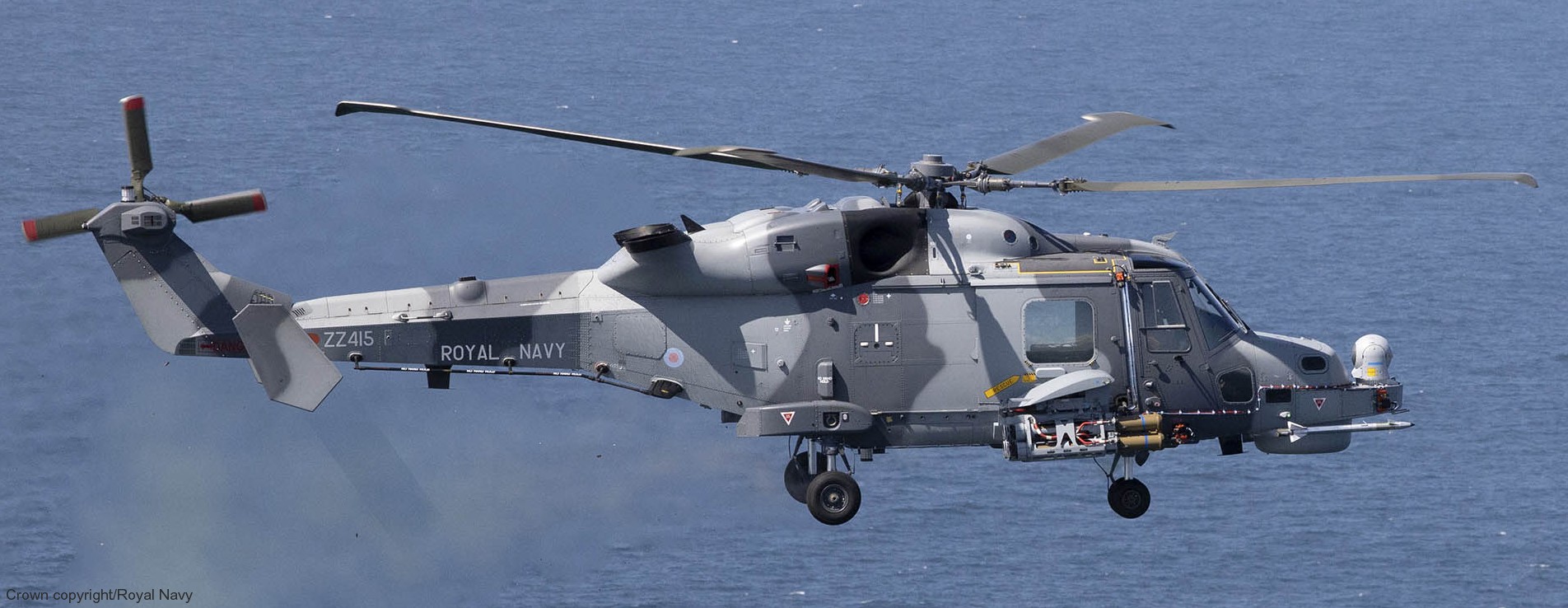 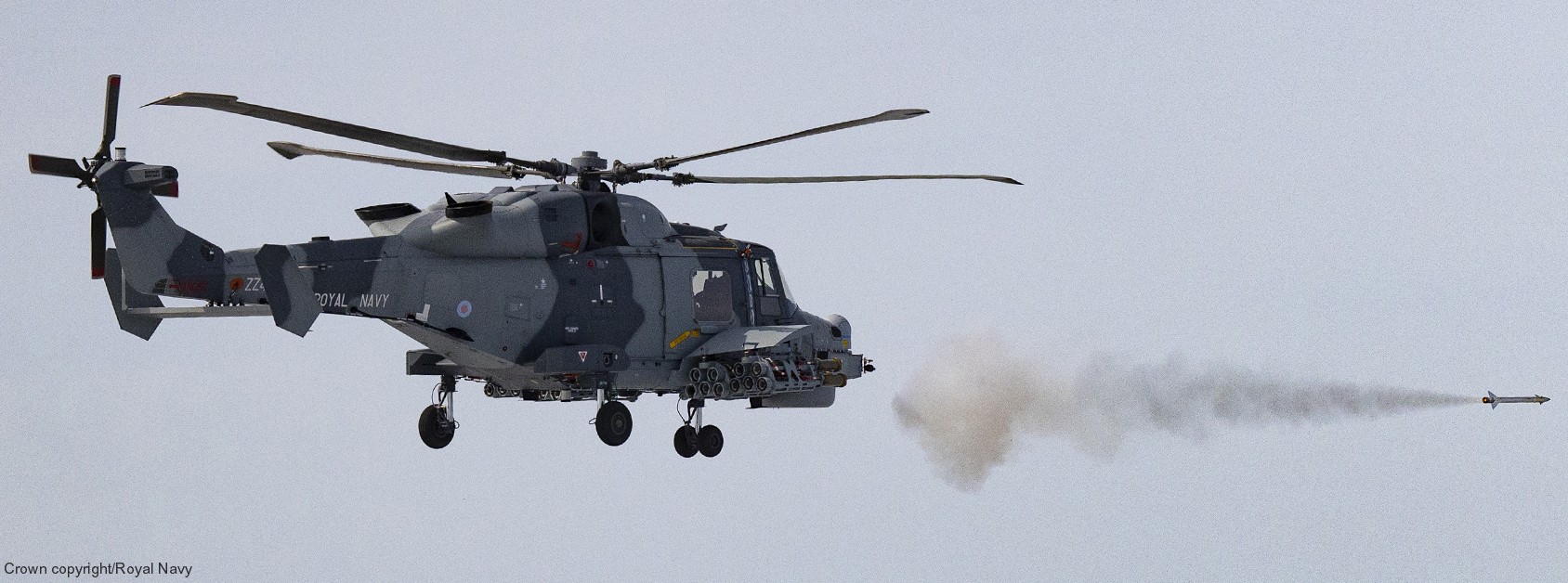 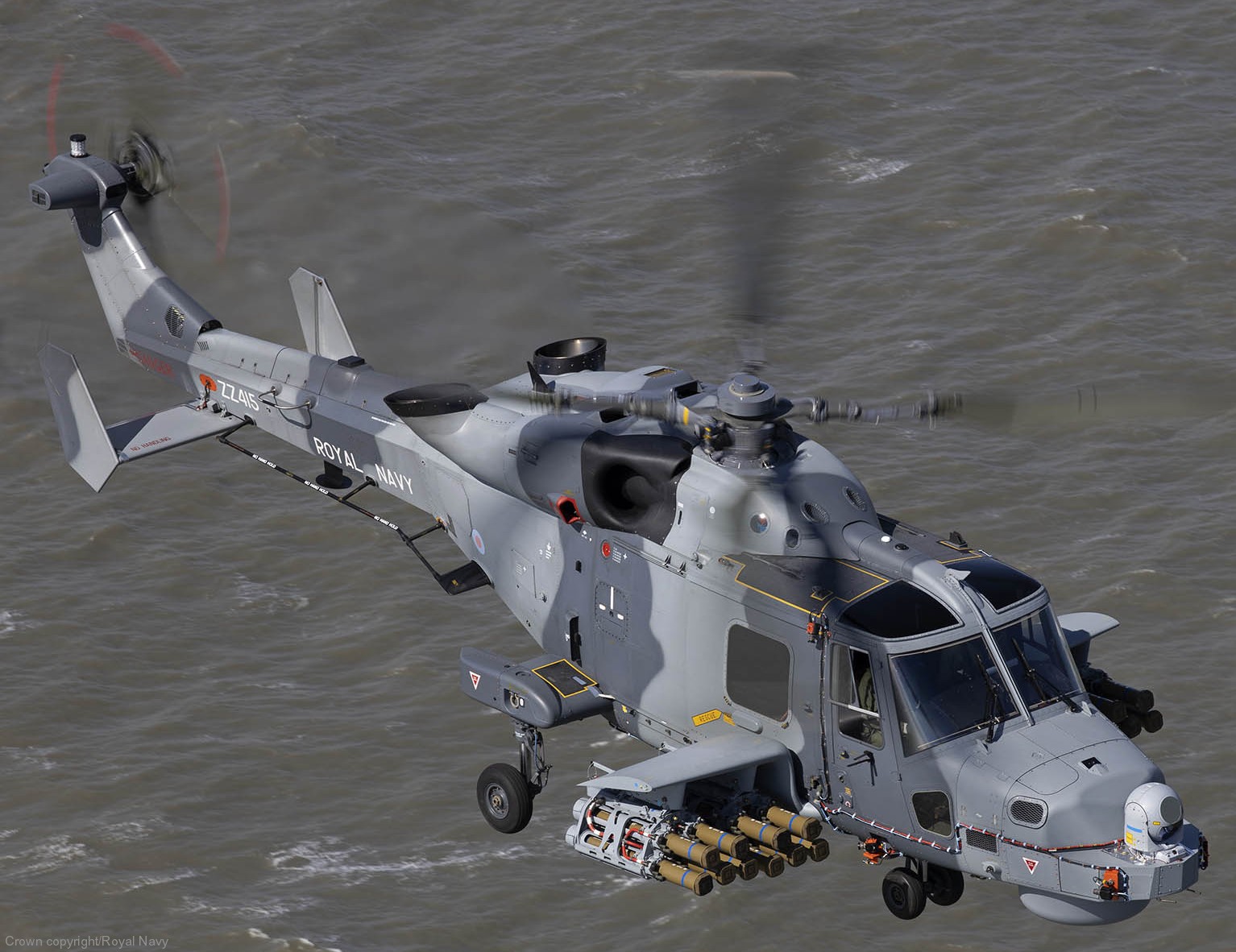 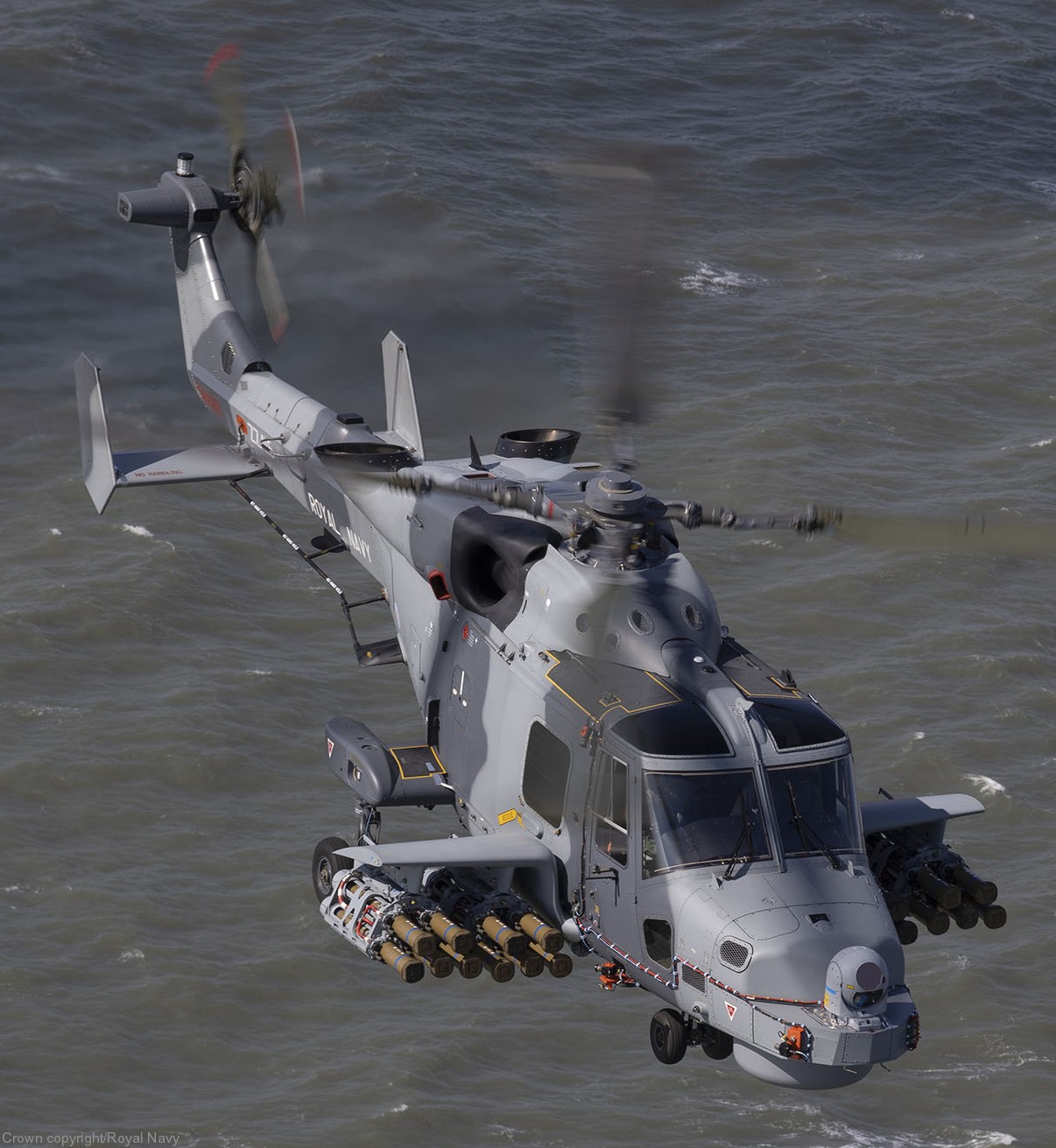 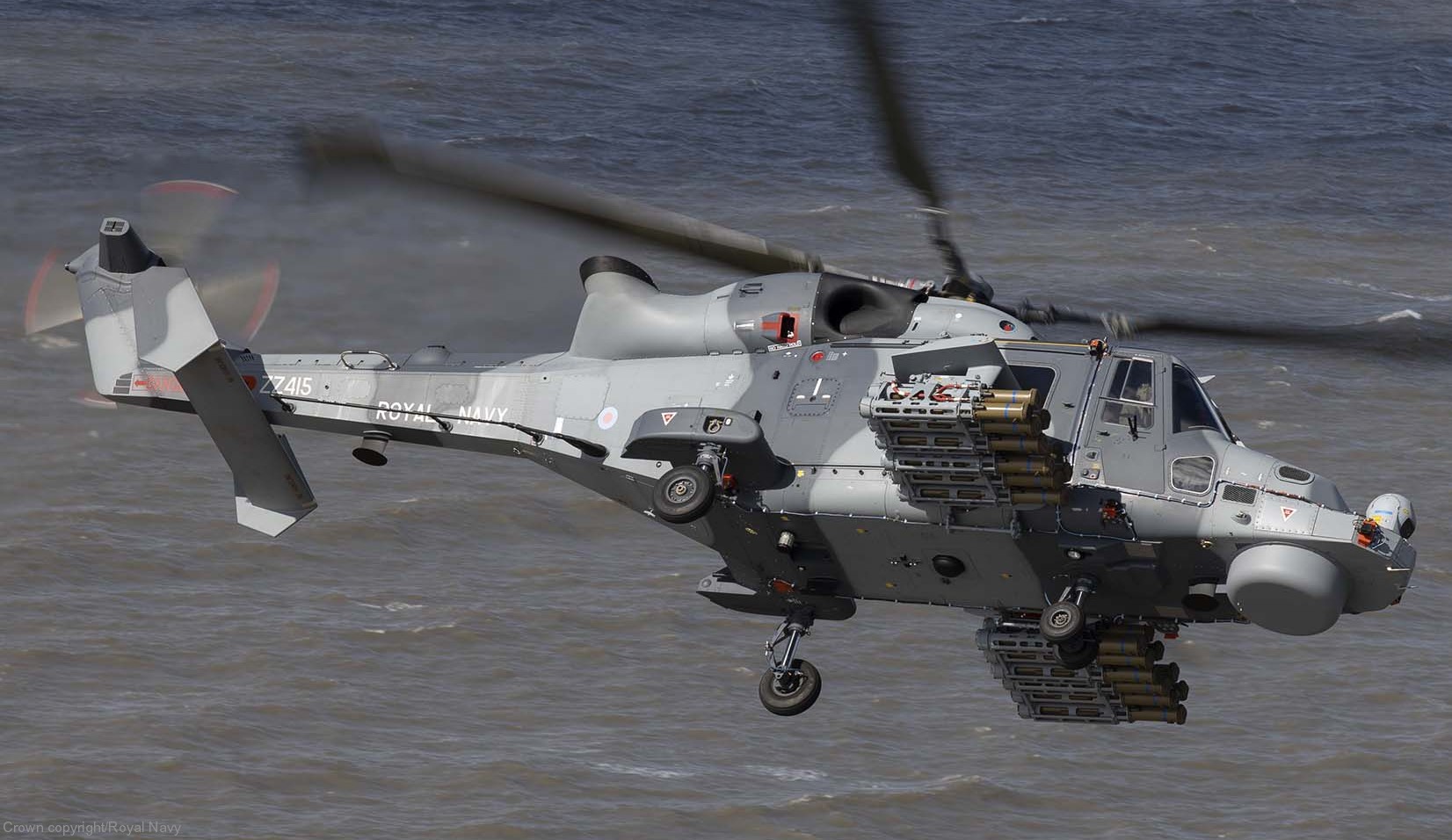 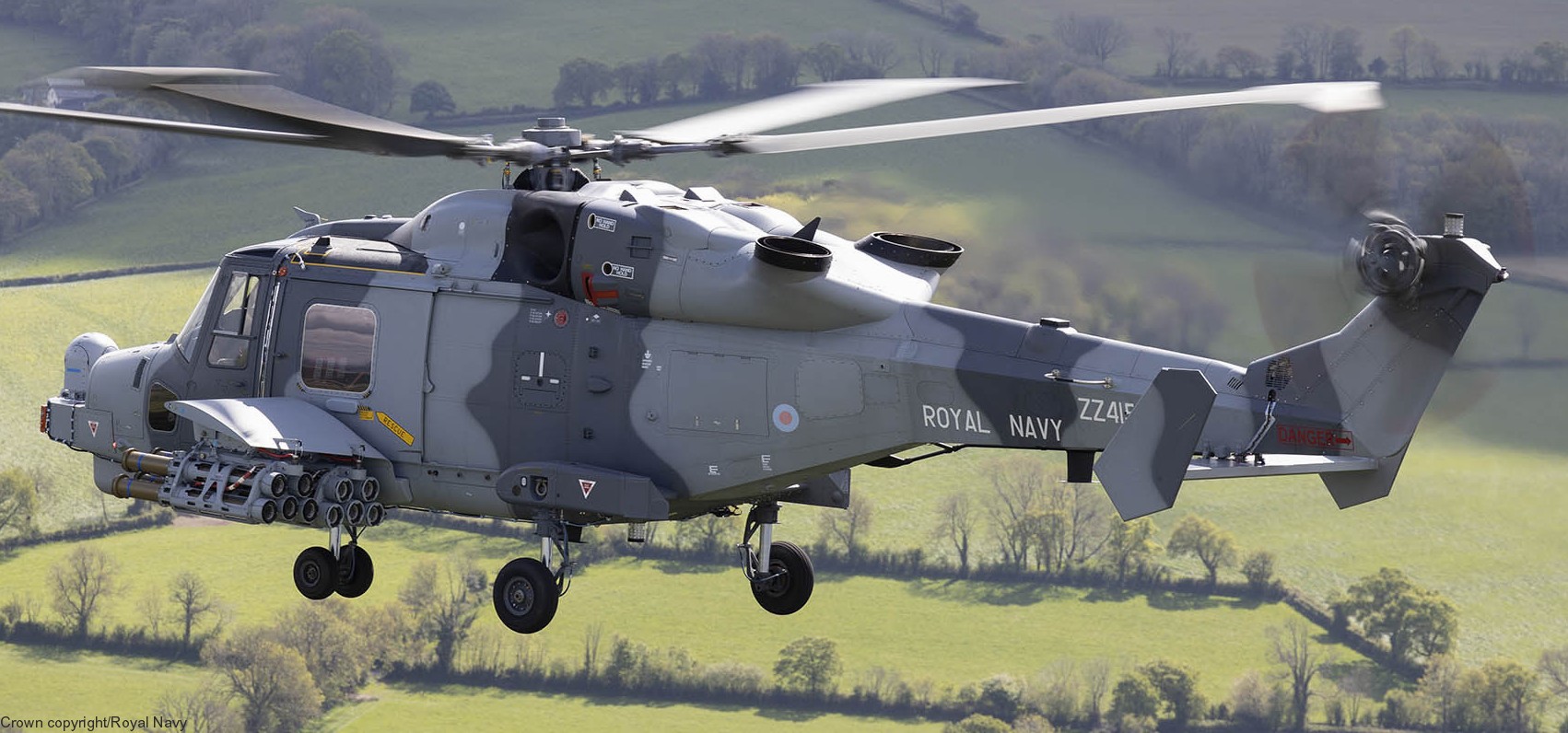 surface-fired from modified DS30M Mark 2 gun (quintuple tube launcher mounted) 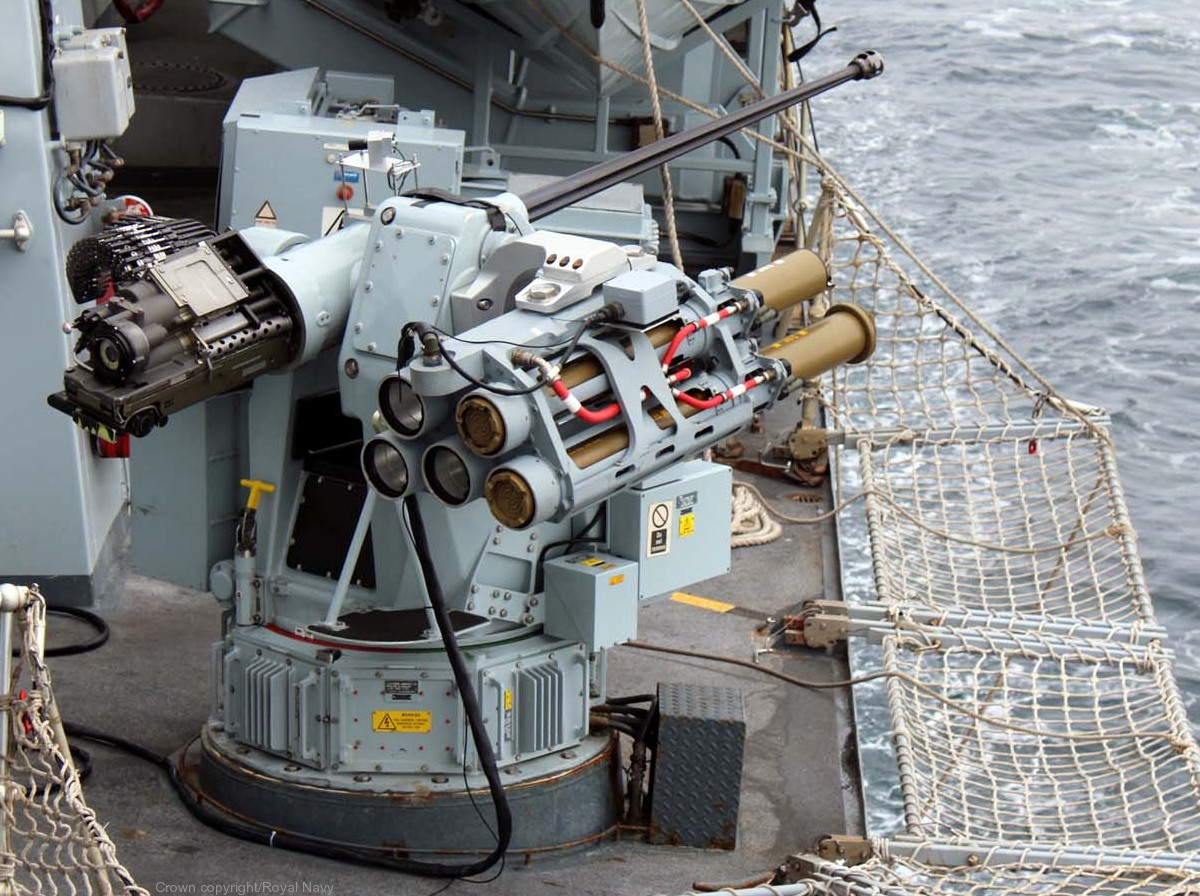 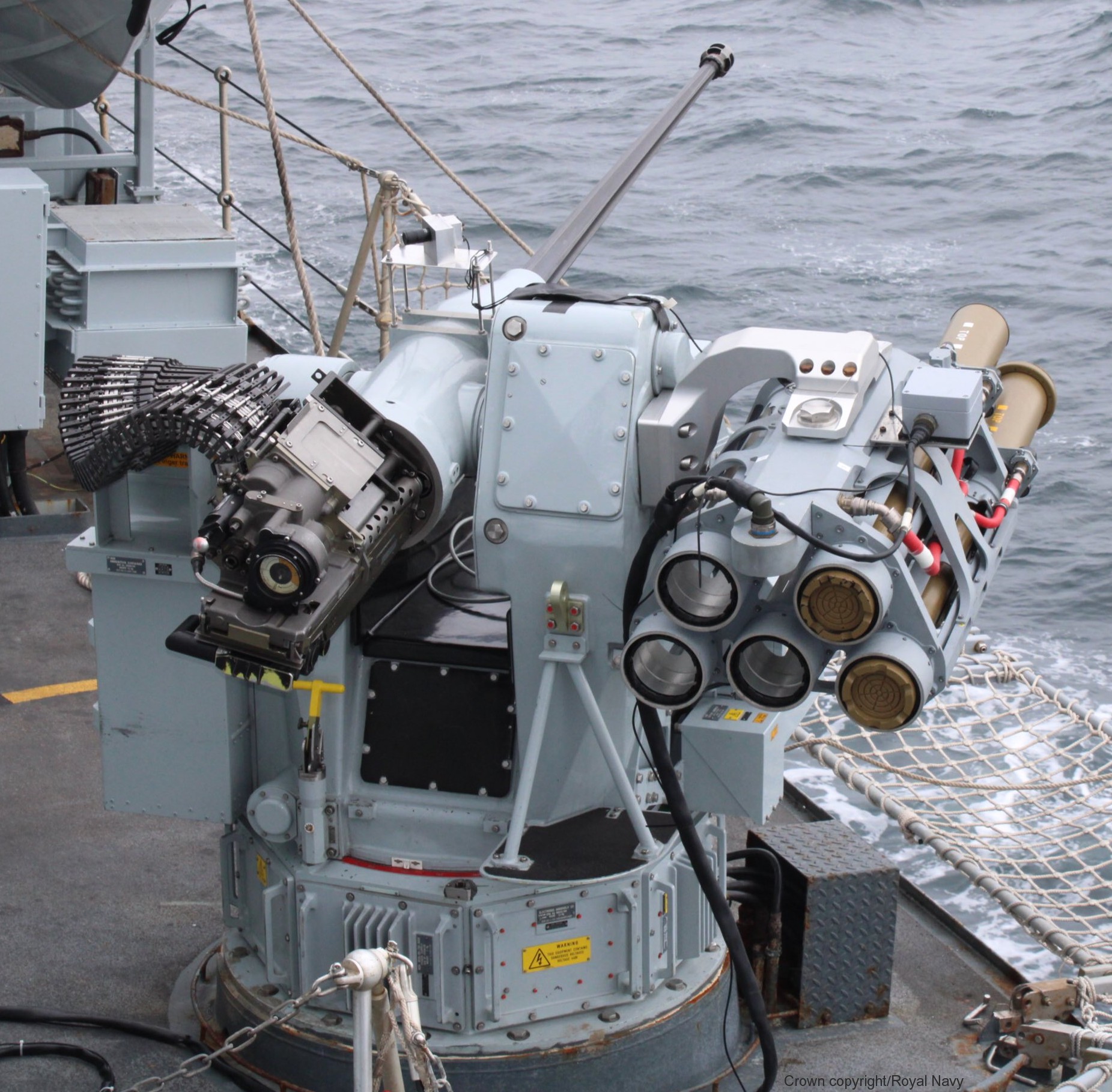 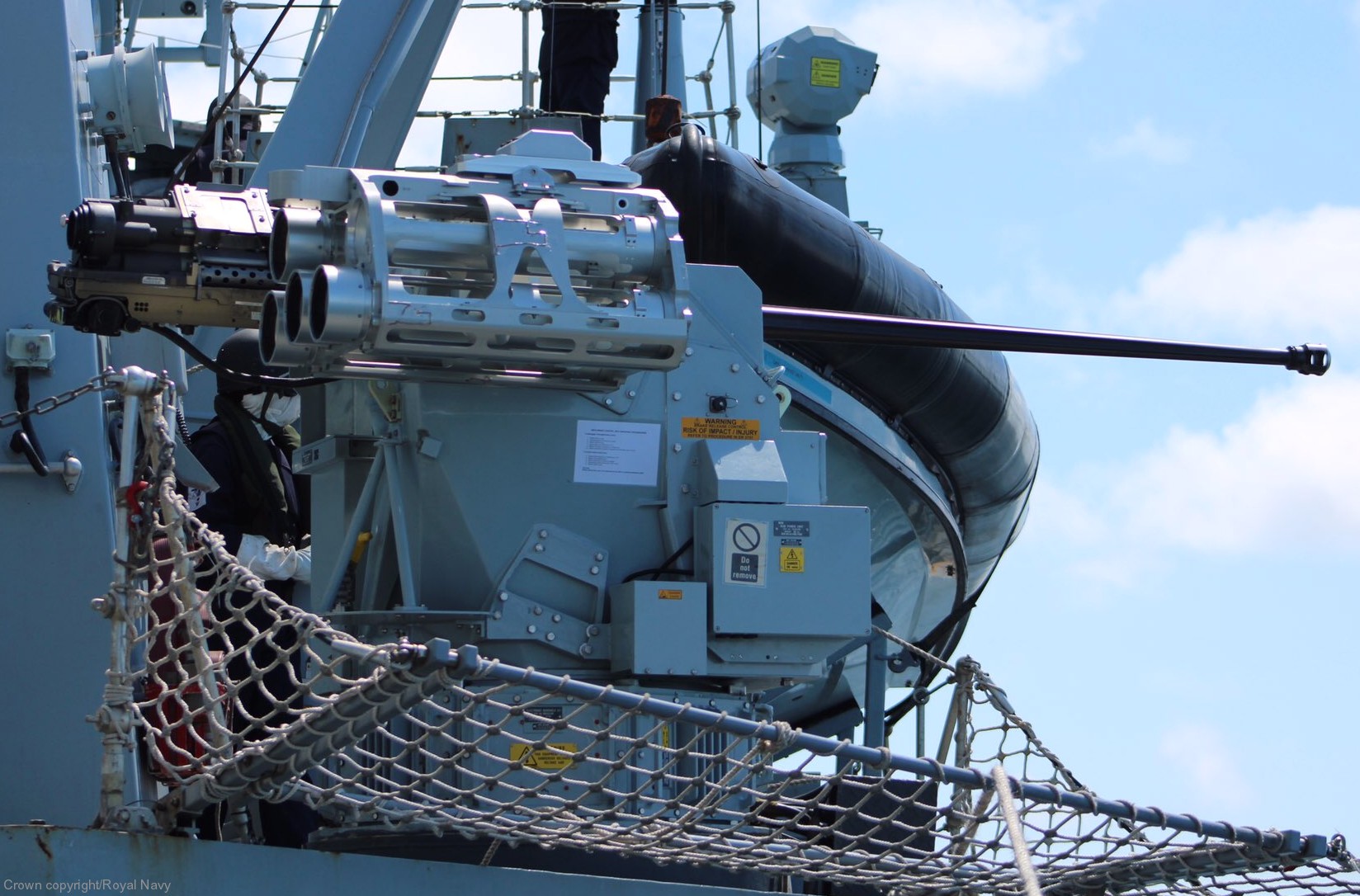 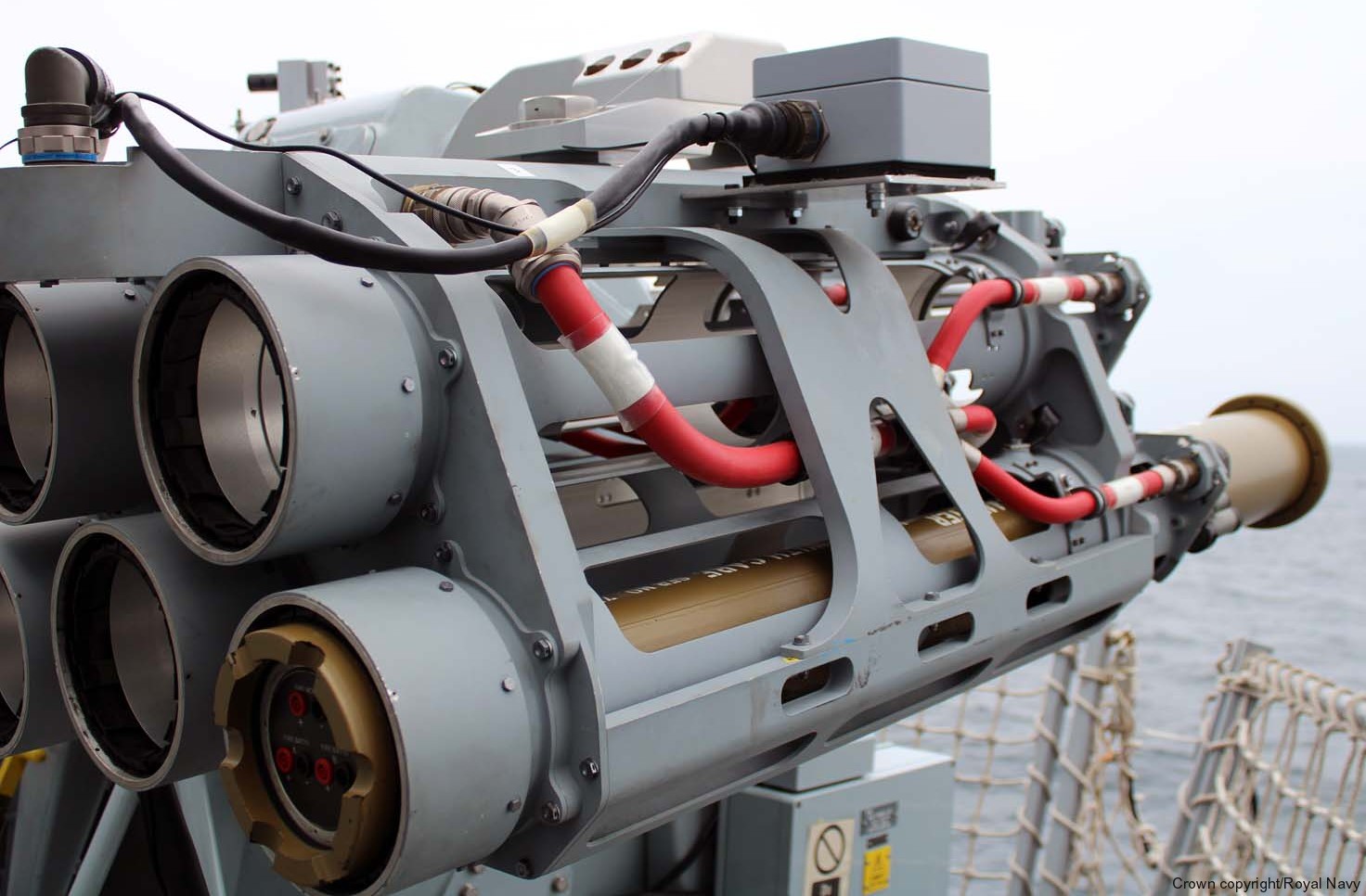 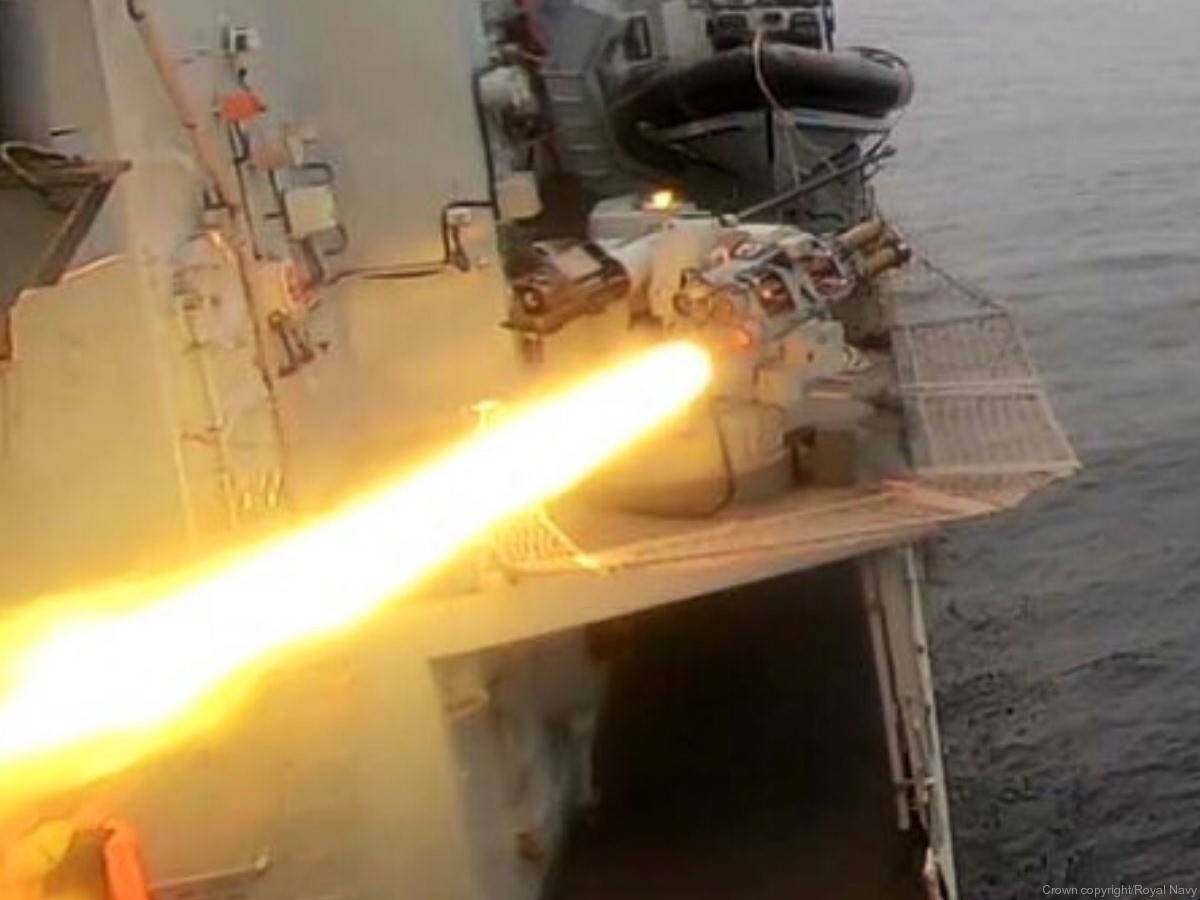 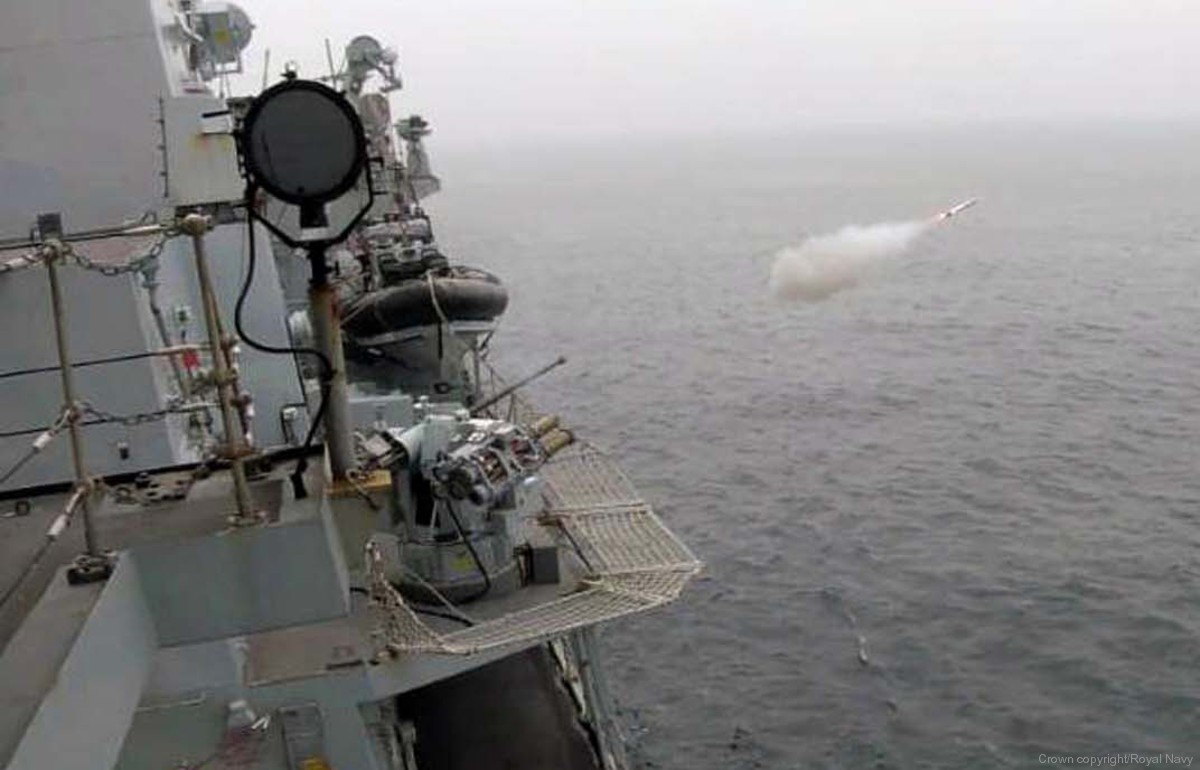 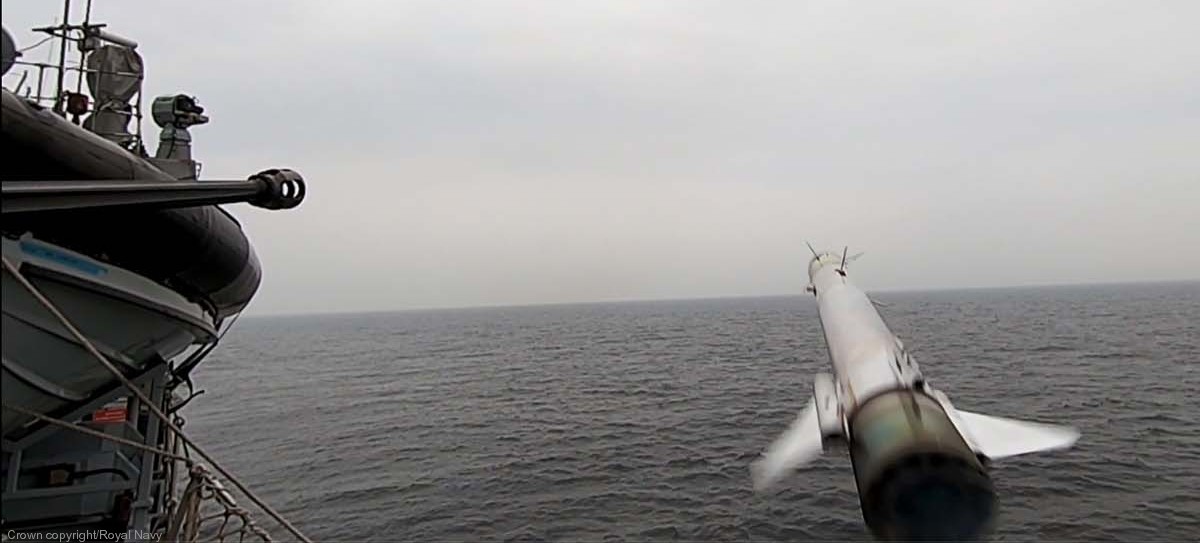 |
|
|
seaforces.org
|
Weapon Systems
start page
| |